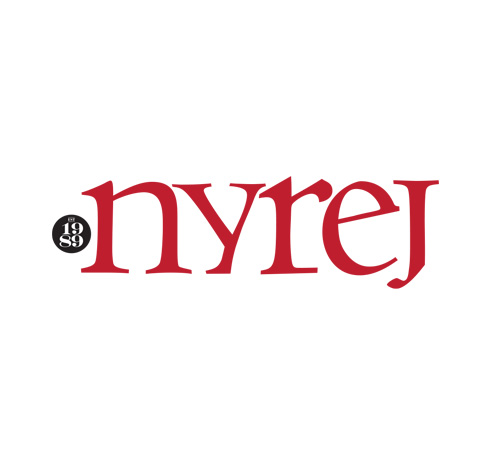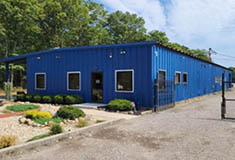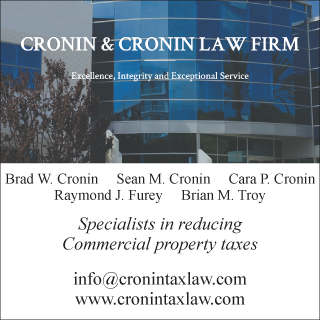News:
Long Island
Posted: September 8, 2014
Upcoming changes to the building code of the city of New York
Effective October 1, the New York City Building Code will implement numerous changes to the existing code. Some of the most important changes to the code deal directly with site safety and protection of adjoining properties found in Chapter 33 entitled "Safeguards during Construction or Demolition."
With regards to site excavation, the Building Code, pursuant to Section 3304.4.4 (Guardrail System), will require that all open edges of an excavation that are six feet or greater in depth be protected by a guardrail system, or by a solid enclosure at least three feet six inches high. However, exceptions to Section 3304.4.4 provide that a guardrail system will not be required where access to the adjoining area is precluded or where the sides of the excavation slope at a three horizontal to one vertical (33%) slope. Furthermore, one or more sections of the guardrail system may be hinged or supported in sockets to allow for necessary openings and intermittent operations.
The Building Code has also implemented new requirements for the underpinning of a project, pursuant to Section 3304.5, where soil and foundation work shall be inspected, including all sides and slopes of excavations and embankments, after rainstorms, or any other hazard-increasing event. Furthermore, pursuant to Section 3304.10, the person causing the soil or foundation work to be performed is required to dewater the site, as needed, for the progress of work, and measures shall be taken to prevent settlement, slope failure, and damage to adjacent buildings affecting by dewatering operations.
Another aspect of site safety that will see a change in October is the protection of adjoining properties under Section 3309. Where a construction or demolition project will require access to an adjoining property, written notification will now be required to be provided to the adjoining property owner at least sixty calendar days prior to the commencement of work. The notification must provide the nature of the work and estimated schedule and duration, details of inspection or monitoring to be performed, protection to be installed on the adjoining property, and contact information for the project. If no response to the notification is received, a second written notice is required to be made no more than forty-five calendar days, and not less than thirty calendar days, prior to the commencement of work.
Another key change to Section 3309 is the implementation of a new adjoining property roof protection protocol. Whenever a building is to be constructed or demolished above the roof of an adjoining property, the person causing said construction or demolition has a duty to protect the adjoining property from damage at all times during the course of work. Where the construction or demolition occurs at a height of at least 48 inches above the level of the adjoining roof, the adjoining roof protection must consist of two inches of flame-retardant foam beneath two inches of flame-retardant wood planking covered by flame-retardant plywood, or consist of equivalent protection acceptable by the commissioner of the Department of Buildings. The required roof protection must extend at a minimum of twenty feet from the edge of the building being constructed or demolished.
Finally, pursuant to Section 3314, where sustained winds or wind gusts at the site exceed thirty miles per hour, the Building Code now requires that the use and operation of scaffolds located on the roof of a building, exterior to a building or structure, on a working deck, or in an area with an unenclosed perimeter, will cease. However, where the manufacturer or designer of the scaffold recommends work to cease at a lower wind speed, such recommendation will apply. Furthermore, all perimeter vertical cables and netting systems are required to be inspected each day and reported in the site log book.
Although these are only a few of the upcoming changes to the Building Code, they are some of the most important, as they deal directly with the protection of persons and property during construction. A complete set of the updated Building Code, which takes effect October 1, can be obtained directly from the Department of Buildings.
Jeffrey Lhuillier, Esq., is an associate for Kushnick | Pallaci PLLC, Melville, N.Y.
Tags:
Long Island
MORE FROM Long Island
Suffolk County IDA supports expansion of A&Z Pharmaceuticals
Hauppauge, NY The Suffolk County Industrial Development Agency (IDA) has granted preliminary approval of a financial incentive package that will assist a manufacturer in expanding its business by manufacturing more prescription (Rx) pharmaceuticals in addition to its existing over-the-counter

Quick Hits
Columns and Thought Leadership

The evolving relationship of environmental consultants and the lending community - by Chuck Merritt
When Environmental Site Assessments (ESA) were first part of commercial real estate risk management, it was the lenders driving this requirement. When a borrower wanted a loan on a property, banks would utilize a list of “Approved Consultants” to order the report on both refinances and purchases.








.gif)
.jpg)